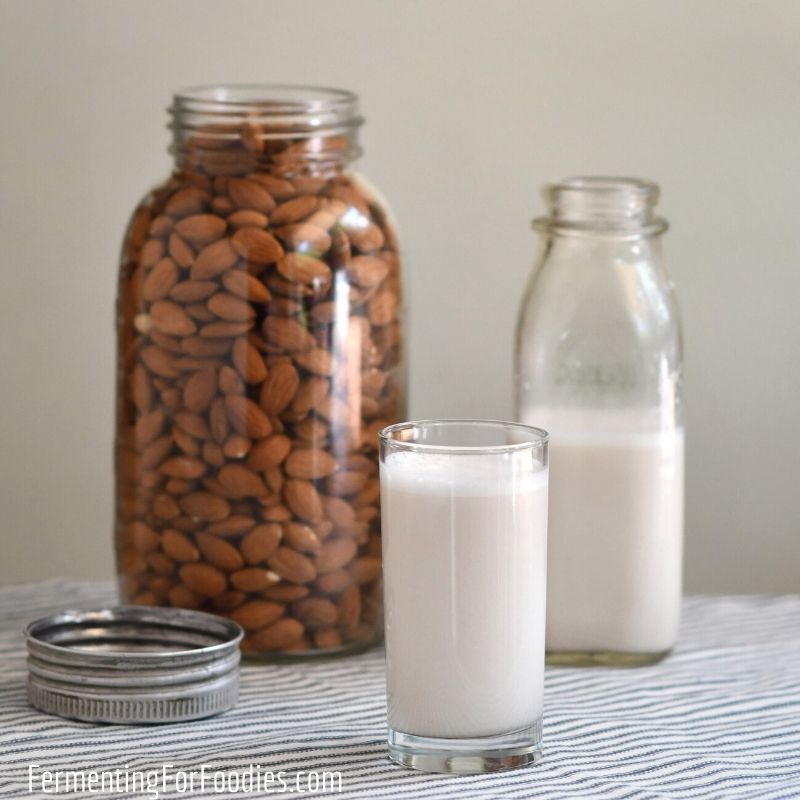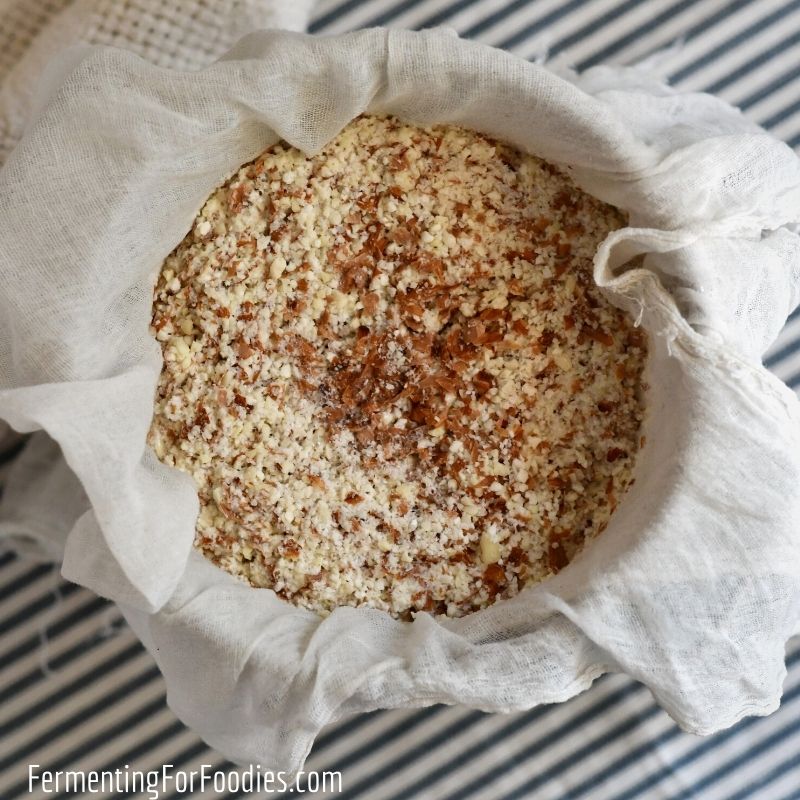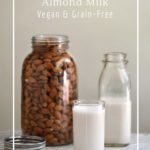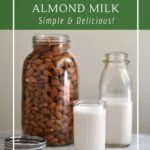Whether you are vegan, paleo, or a flavor-seeking foodie, homemade almond milk is something you should try. Fresh almond milk is frothy, creamy, and delicious. It’s also VERY EASY to make!

Here’s why I regularly make almond milk at home:
- Homemade almond milk is perfect for almond milk yogurt. Store-bought nut milk typically contains too many preservatives to culture properly, so homemade nut milk is key.
- Fresh almond milk is a treat. My kids love the foaminess.
- It adds a delicious almond flavor to hot chocolate, rooibos tea, chai tea, or coffee.
- The ground almonds are the perfect addition to homemade granola and other baked goods. It’s also the base of my favorite breakfast, nutola!
- Almond milk is a satisfying dairy-free alternative.
Homemade Almond Milk Tips and Tricks
Honestly, this recipe is so easy that it’s pretty much the only thing I do with whole almonds! The flavor is so amazing that once you’ve tried it, it will probably become part of your regular routine.
Here are a few tips and tricks to help you make the most of your almond milk.
Storage
Almond milk doesn’t last very long in the fridge. I find that the flavor starts to go off after about 3 days. Here are two ways of preserving almond milk:
- Freezing: Almond milk can be frozen. However, defrosted almond milk is really only good for baking. It’s just not as nice for drinking.
- Culturing: It’s really easy to make almond milk yogurt. The probiotic culture will preserve the almond milk for a few weeks.
Save The Almond Meal!
To be honest, I love the ground almond meal almost as much as I love almond milk!
Almond meal is a great way to add protein to muffins and cookies, or make a flourless orange chocolate cake. However, I usually add almond meal to our breakfast cereal.
Here’s how to save your almond meal for future use:
- Reserve the ground almond meal from making almond milk.
- Spread it out on a rimmed baking sheet. Place it in the oven, and turn the oven on to 300 F.
- Roast for 15 minutes (while the oven preheats). Give the almonds a stir, and continue roasting until they’ve fully dried out. (About 30 minutes).
- Store ground almond meal in an air-tight container at room temperature for 1 month or in the fridge for several months.

Easy Homemade Almond Milk
Homemade almond milk is an easy and satisfying dairy-free alternative. Unlike store-bought almond milk, fresh almond milk is creamy, frothy and delicious.
- Prep Time: 15 minutes
- Total Time: 15 minutes
- Yield: 2 to 4 cups 1x
- Category: Beverage
- Cuisine: Healthy
- Diet: Vegan
Ingredients
- 1 cup of almonds
- 2 cups water to soak
- 2–4 cups of water for grinding (see notes)
Instructions
- Cover the almonds with 2 cups of water and leave to soak for a minimum of 12 hours, but up to 48 hours is fine. Drain the soaking liquid and rinse the almonds.
- Put the almonds in a blender and pour in 2 to 4 cups of water. Pulse until the almonds form a coarse meal.
- Pour the ground almonds and water through a nut bag or several layers of cheesecloth to strain out the almonds. Squeeze any remaining “milk” from the ground almonds.
- Store the milk in the fridge and use it within 3 days. The raw almond meal will last for 1 week in the fridge. See the section above for long-term storage options for almond milk and almond meal.
Notes
- Nut bags
are the easiest way to make almond milk, but a strainer lined with several layers of cheesecloth
will also work.
- I like flavorful almond milk, so I usually only use 2 cups of water for 1 cup of almonds. However, you can dilute almond milk with up to 4 cups of water for 1 cup of almonds.



We made this and it came out as a lovely drink. Just a hint of sweetness. We then used the leftover almond mush in our granola! What a great idea.
Thanks!
Is the nut bag you linked to on Amazon your favourite? I was looking at reviews and thinking about the difference between the nylon bags vs. organic hemp or cotton. The reviews suggested that hemp might be the best, for sturdiness and purity. Nylon seems most practical, but there’s concern about it not being a natural fabric. Would love to hear your thoughts!
I have a nylon bag and a cotton bag… and I will say the nylon bags is holding up better. I wash them both in the laundry, in my delicates load, so maybe that’s why the cotton isn’t holding up?